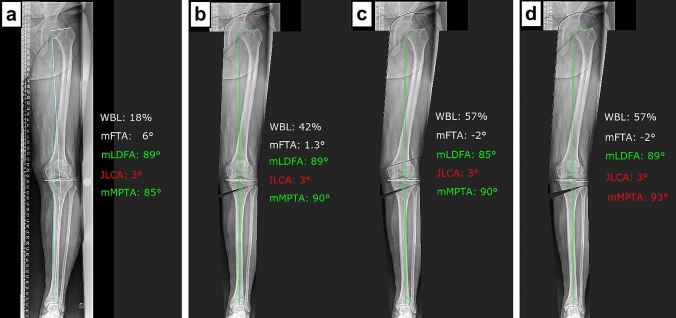Fig. 2.
Illustrative case example 3. a Deformity analysis revealed a varus deformity of 6° without a true bone deformity based on the malalignment test [39]. However, potential for bony correction exist in both, the proximal tibia and distal femur, with the greater potential being located at the proximal tibia. b, c First osteotomy simulation tolerating mLDFA ≥ 85° and mMPTA ≤ 90° (anatomic correction): by simulating HTO alone, 1.3° of varus alignment remains with the mMPTA set at 90°. By simulating a double-level osteotomy, the deformity can be corrected to the desired alignment of 2° of valgus without exceeding the upper and lower limit of the mMPTA and mLDFA, respectively. d Second osteotomy simulation tolerating mLDFA ≥ 85° and mMPTA ≤ 95° (overcorrection): the deformity can be corrected via HTO to the desired alignment of 2° of valgus without exceeding the upper limit of the mMPTA of 95°

